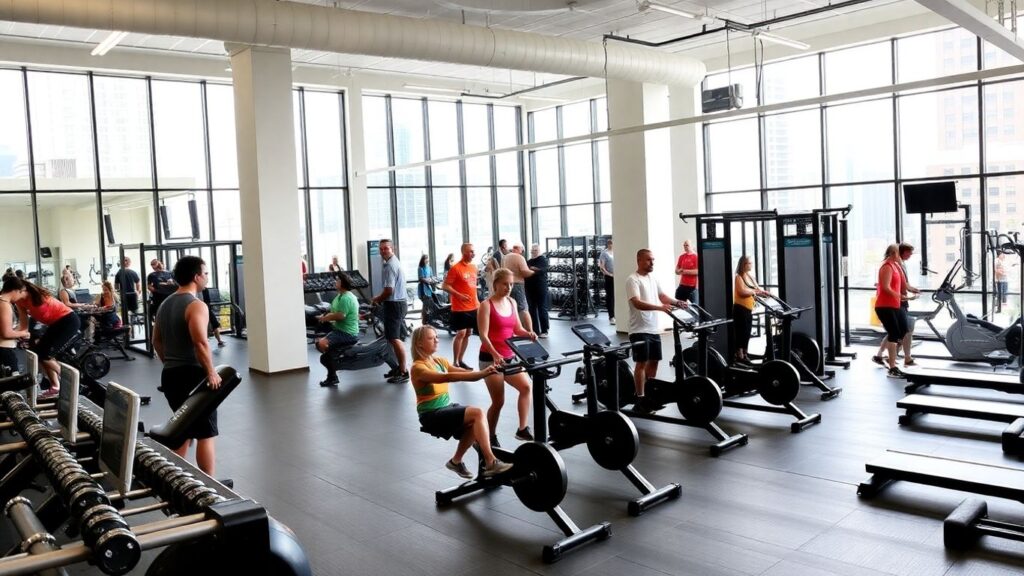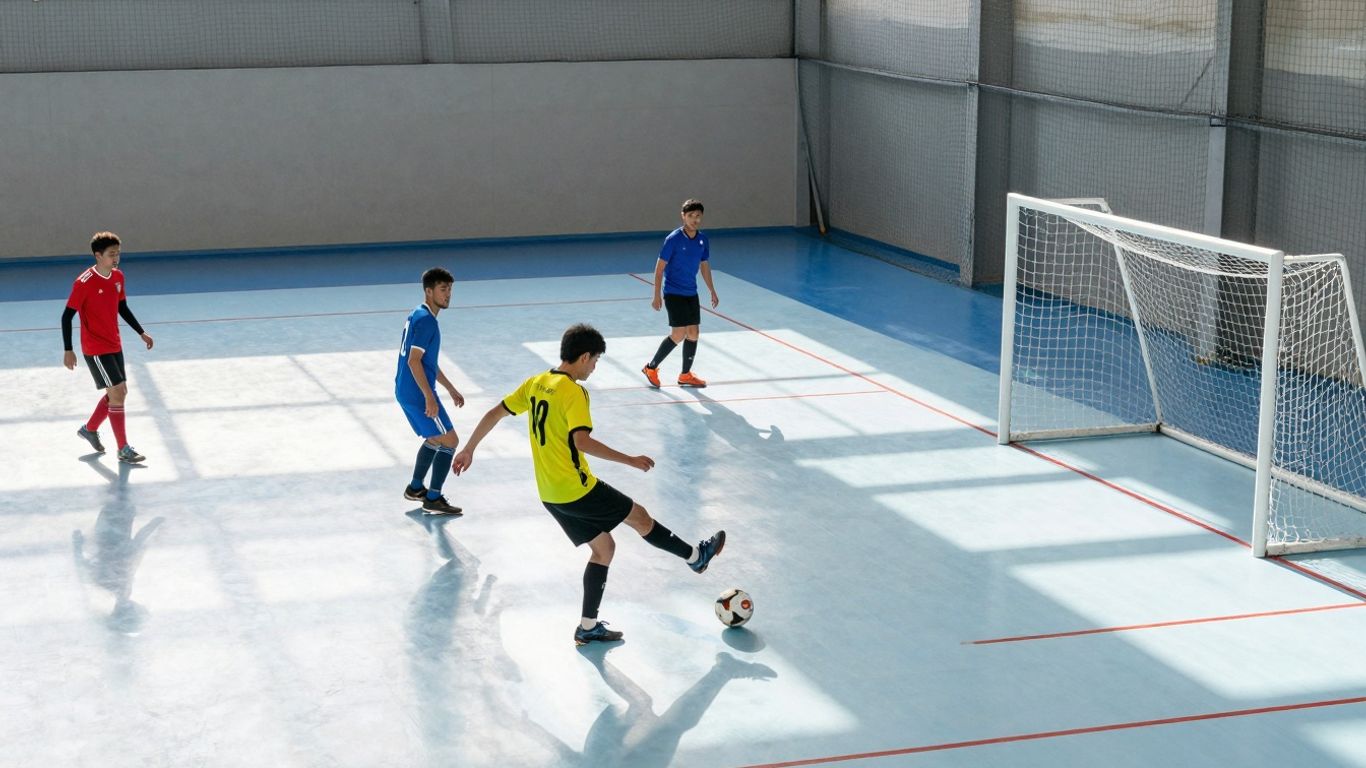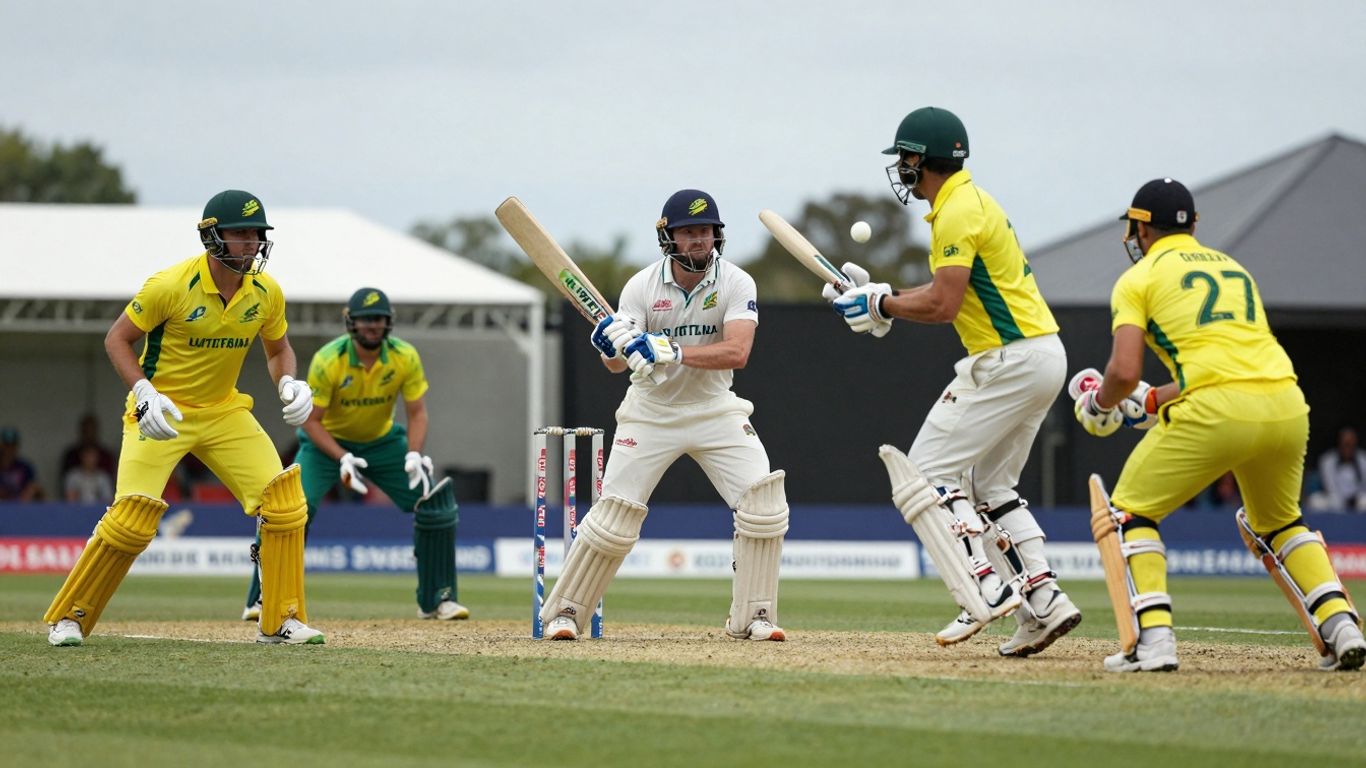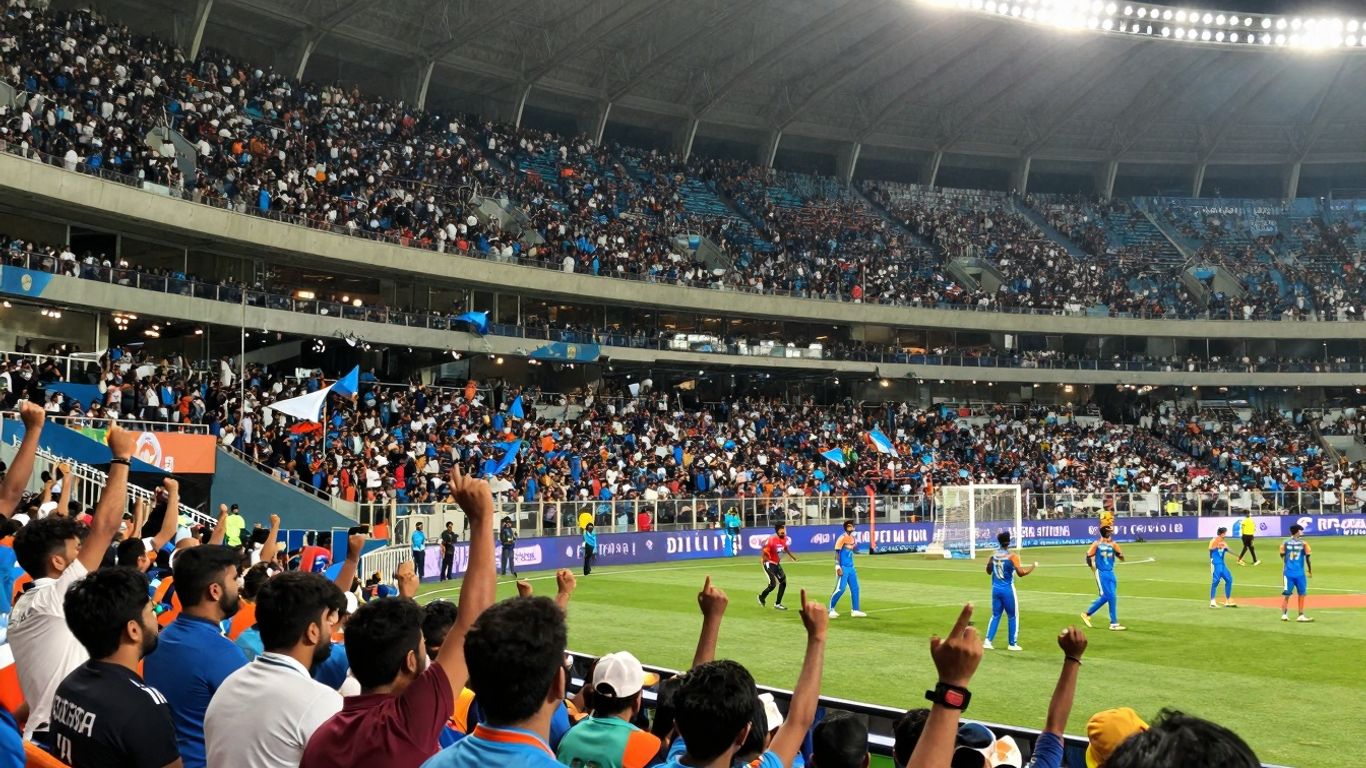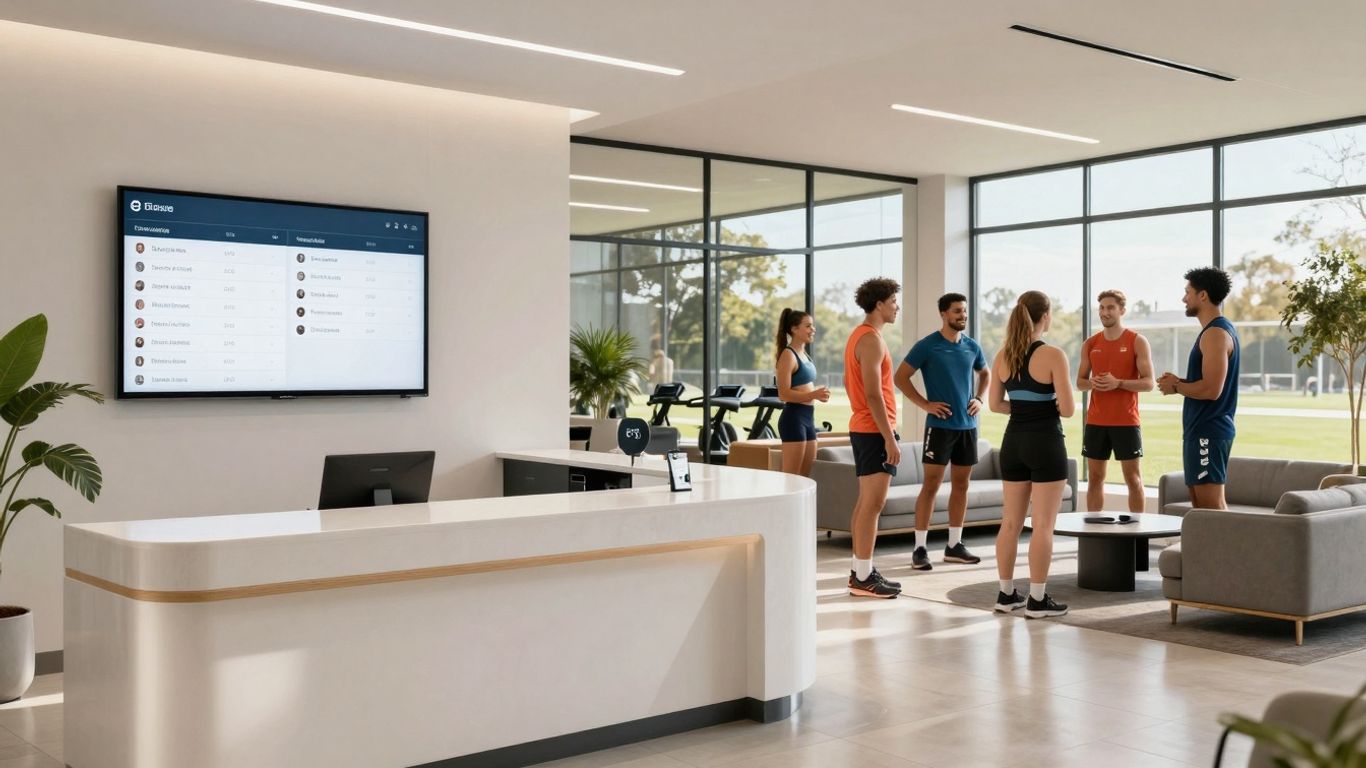Trying to pick the best gym in Melbourne, Australia for 2025? It’s not as easy as it sounds. There are gyms on every corner—some huge, some tiny, some all about lifting, others more into yoga or group classes. It gets a bit overwhelming, honestly. You want a place that fits your goals, your budget, and your style. Maybe you’re chasing big strength gains, or maybe you just want somewhere friendly to move your body after work. Either way, there’s a gym out there for you. This guide breaks down what to look for, what to ask, and which gyms are getting attention in Melbourne right now. Let’s make finding your next gym a bit less confusing.
Key Takeaways
- Get clear on your fitness goals before signing up—knowing what you want makes choosing the best gym in Melbourne, Australia much easier.
- Melbourne gyms come in all shapes and sizes, from big chains to boutique studios, so compare what each offers and see what matches your vibe.
- Membership prices can vary a lot; check what’s actually included and don’t be afraid to ask about discounts or trial periods.
- Look at the gym’s equipment, tech, and extra perks—good gear and clean facilities make a big difference.
- Try a few gyms out before you commit, read the contract carefully, and make sure you’re comfortable with the flexibility of their membership options.
Clarifying Your Fitness Goals and Aspirations
Defining Your Personal Why
Figuring out why you want to join a gym isn’t just a feel-good exercise—it’s what will pull you out of bed on those cold Melbourne mornings. Are you after more energy so you can keep up with your kids? Or maybe you want to lower your stress after work. Nailing down your real reason helps you avoid wasting money on a membership that doesn’t do much for you.
Here are some typical personal reasons people set for joining a gym:
- Lose weight and improve overall health
- Build muscle or body strength
- Increase stamina for upcoming events (like a fun run or hike)
- Manage stress levels through regular movement
- Socialise and meet like-minded people
Be honest with yourself about what really matters, even if it’s as simple as making new friends or just getting out of the house more regularly.
Setting Realistic and Measurable Targets
Vague goals rarely get results. It’s easy to say “I want to get fit”, but what does that mean for you? The SMART method is everywhere these days, but it actually works: keep your goals Specific, Measurable, Achievable, Relevant, and Time-bound. For instance, don’t just aim to "run more"—commit to "finishing a 5km Parkrun by September" or "squatting 60kg for five reps by the end of the year."
Here’s a super simple table to guide how you might set a SMART goal:
| Goal | Is it Specific? | How Measured? | Timeframe |
|---|---|---|---|
| Lose weight | No | ? | ? |
| Lose 5kg | Yes | Scales | By August 2025 |
| Improve energy | No | ? | ? |
| Run 5km in 30 minutes | Yes | Stopwatch | By October 2025 |
It’s about making sure you’ve got something to aim for—and a date to check in.
Aligning Gym Selection with Your Objectives
Once you know your personal why and your measurable targets, it’s time to think about which gyms will help you actually hit those marks. If you’re all about lifting heavier, you’ll want a place that’s stacked with racks, dumbbells, and maybe even strongman equipment. If your focus is stress relief and recovery, look for studios with yoga, saunas, or a good pool.
There’s also the tech side: many gyms in Melbourne now use wearable tech and apps for progress tracking. If data keeps you motivated, finding a gym embracing the latest health-tracking gadgets could be a smart move.
- Visit the gym in person, try a week or two, and talk to staff about your goals.
- Check if the gym has trainers or classes that match your focus area.
- Think about the gym’s location—convenience really helps you stick with it.
Choose a gym that fits not just your goals, but your everyday life. It might take a couple of tries, but when you land in the right spot, showing up feels a lot easier.
Comparing Melbourne’s Gym Styles and Specialisations
Melbourne has a ridiculous number of gyms, and sometimes picking between them feels like trying to choose a burger joint on a street with five in a row. They’re not all the same—they each have a different feel, crowd, and focus. What works well for one person’s routine might be a terrible fit for someone else. Let’s break it down and see what sets these gyms apart in 2025.
Traditional Fitness Centres vs Boutique Studios
Traditional fitness centres are what most people imagine when they think of a gym: big spaces, rows of cardio machines, a heap of weights, and usually open 24/7. These places suit folks who like doing their own thing, don’t mind a varied crowd, and want freedom in their workout times. Prices here are usually lower, but don’t expect fancy extras.
Boutique studios, on the other hand, turn the volume down on size and focus instead on a more personal touch. Think group classes with a specific focus—Pilates, CrossFit, boxing. There’s always a niche or two, and usually a strong sense of community. You’re paying extra for this: the coaching gets personal and the spaces are well-kept, but budgets can get wrecked if you’re taking multiple classes a week.
| Gym Type | Weekly Cost | What You Get |
|---|---|---|
| Budget Chain | $10 – $20 | 24/7 access, basic machines, minimal classes |
| Mid-Tier Gym | $20 – $40 | Modern equipment, more classes, better facilities |
| Boutique Studio | $30 – $60+ | Specialised classes, expert trainers, community |
Strength Training, Yoga, and Functional Options
Strength training gyms, like Dukes Gym Richmond, are heaven for anyone keen on weights. They’ve got racks and platforms ready for squats, deadlifts, and all sorts of lifting—plus space to move around without bumping elbows every set.
Yoga and wellness centres go the other direction entirely: think calm, quiet, and lots of stretching or balance work. Kaya Health Clubs is a popular option, making it easier to actually reset after a busy day.
Functional training gyms are all about workouts that mimic stuff you actually do—not just biceps curls. You’ll see things like kettlebells, ropes, and bodyweight circuits. The group settings at places like Fluid Fitness Collingwood’s inclusive approach make these sessions less intimidating if you’re trying something for the first time.
- Strength gyms focus on space, heavy weights, and equipment variety
- Yoga studios keep things calm, stretch-focused, and community-minded
- Functional gyms run circuits and group classes for practical strength
One of the best ways to know if a gym’s style fits is to pay attention to the people—do they look like they’re doing what you want to do? If not, it might be worth looking somewhere else.
Exploring Specialty and Niche Fitness Spaces
Melbourne’s a creative city, so it’s no surprise the gyms aren’t all cookie-cutter clones. Some fitness spaces cater to really specific interests, like climbing at BlocHaus or performance training that targets sports skills. These are less about pumping iron and more about building a certain skill or having fun while you sweat.
A few things that stand out about specialty gyms:
- Community feels extra tight-knit compared to mainstream gyms
- Classes may run on strict timetables, so spontaneity can be tricky
- Coaches are often experts in their particular field, making sessions super focused
It’s worth jumping out of your comfort zone to check out these spaces—especially if your routine is feeling stale. Your perfect fit could be a place you wouldn’t think to try at first. If all else fails, there are always new places opening—just like Melbourne’s burger scene, there’s always another hidden gem.
Assessing Membership Value and Costs in 2025
Sorting through all the gym choices in Melbourne can get overwhelming, but understanding the real value and cost of your membership is essential if you want long-term satisfaction and avoid buyer’s remorse.
Understanding Price Points Across Tiers
Gym memberships in Melbourne now come in a bunch of different packages. Here’s a snapshot of what you can expect in 2025:
| Membership Type | Typical Cost/Week | Access Level |
|---|---|---|
| No-Frills (budget gyms) | $10 – $20 | 24/7, limited staff & extras |
| Mid-Tier (national chains) | $20 – $40 | Classes, PT, more equipment |
| Boutique/Studio (specialty) | $30 – $55 | Small group classes, niche |
| Premium/Wellness Clubs | $40 – $80+ | Pools, recovery, spa, tech |
- Budget gyms might have less variety but suit you if you just want basic 24/7 access.
- Mid-tier chains usually throw in group classes, some level of personal coaching, and extra facilities.
- Boutique studios excel if you love yoga, Pilates, or HIIT, but expect smaller spaces and pricier fees.
- Premium clubs may offer smart equipment, wellness zones, cafes, even massages.
Don’t just look at the sticker price — think about how often you’ll actually use the extras you’re paying for.
What’s Included in Your Membership
Not every gym is created equal, so get clear on what’s actually covered:
- Unlimited classes (yoga, Pilates, HIIT, spin)
- Guest passes
- Health assessments and body scans
- Sauna, spa, or pool access
- 24/7 opening hours
- Digital classes and online content
In 2025, it’s quite common for gyms to bundle in hybrid access, so you can train in-person or follow on-demand video classes at home. This works especially well for those with unpredictable schedules or who value options like online yoga or strength classes (holistic health and fitness offerings).
Negotiating for the Best Deal
You don’t always have to accept the first price. A few tactics that can work in your favour:
- Ask about current promos — many gyms drop enrolment fees or offer extra weeks free once you show real interest.
- Request flexible memberships, like rolling options or off-peak pricing, if you train outside busy hours.
- Use your trial visit to chat with a manager — sometimes expressing hesitation yields a discount or some freebies (like PT sessions).
- See if multi-location access or adding a friend/family member brings the per-person price down.
Always double-check what happens if you need to pause or cancel. Getting stuck with hidden fees or a long lock-in contract is the kind of problem that leaves a bad taste long after you’ve stopped training.
Evaluating Facilities, Equipment, and Technology

Melbourne’s fitness options keep expanding, and what’s inside the gym can be just as important as its vibe. Picking the right gym means digging into more than whether it has a row of treadmills – it’s about the mix of gear, tech, and extra comforts that match the way you move. Let’s get into the details of what you should look for in 2025.
Quality and Range of Gym Equipment
When you step onto the gym floor, take note of two things: variety and upkeep of equipment. You don’t want to be standing around waiting to use a single set of dumbbells, or finding the rowing machine out of action every other day.
- Scan for diverse cardio, strength, and functional gear – a good place will have options for both weightlifters and those after bodyweight circuits.
- Check if areas are clearly labelled and equipment is actually where it’s supposed to be, not scattered everywhere.
- Maintenance matters: spotless, rust-free weight plates and smoothly running machines mean the management takes pride in their space.
| Equipment Type | Found in Most Gyms | Up-to-date Models (2025) | Extra Features |
|---|---|---|---|
| Cardio Machines | Treadmills, Bikes | Touchscreens, Streaming | Heart rate tracking |
| Free Weights | Dumbbells, Barbells | Rubberised, Ergonomic | More lifting platforms |
| Functional Training | Kettlebells, Bands | Smart tracking gear | Sled lanes, boxes |
Access to Innovative Fitness Tech
Technology now plays a bigger part in everyday training. Melbourne clubs are picking up these trends:
- Smart access systems, so no more lost keycards.
- On-demand screens for classes and guided workouts, useful if you train odd hours.
- Wearable integration, letting you sync your routines and progress straight to your device.
- Recovery gadgets like percussive therapy and infrared saunas are popping up in more spots – once luxury, now nearly standard in premium clubs.
If you love geeking out over the latest in fitness tech or want to find out what’s hot, a visit to the Australia Fitness Expo 2025 gives fresh insight into what gyms in Melbourne are adopting next.
Additional Perks and Recovery Services
Outside of workout gear, these extras can really set one club apart from another:
- Clean, spacious locker rooms with actual working showers (not just a trickle!)
- Access to pools, steam rooms, or chill-out saunas for a proper wind-down
- Dedicated zones for stretching, mobility, and even power naps
- In-house or connected cafes where you can grab a shake, coffee, or meal on the run
Sometimes the small touches – a towel service, good air flow, plenty of sockets for your phone – make it easier to show up, session after session. If you walk through and it all just feels easy, that’s a good sign the gym is serious about member comfort.
Pick a few clubs in Melbourne you’re interested in. Actually walk through during peak times, give the machines a go, and don’t be shy to ask staff about any new features, recovery spaces, or tech. It’s the only way to know if you’ll actually use what your membership is paying for.
Prioritising Health, Safety and Cleanliness
Choosing a new gym is about more than ticking off your fitness goals—feeling secure and comfortable during your workouts is just as important. Here’s what to really look for in a Melbourne gym this year:
Cleanliness Protocols and Hygiene Standards
A clean gym doesn’t happen by accident—there should be a clear, visible system behind spotless benches and tidy change rooms. Ask about cleaning schedules, and don’t be afraid to check if staff regularly wipe down equipment and high-use areas like weights, handles, and cardio machines. Sanitiser and wipes should be easy to find, not hidden or empty.
| Hygiene Feature | Basic Gym | Premium Gym |
|---|---|---|
| Cleaning Frequency | 1x/day | 2–3x/day |
| Sanitiser Stations | Main area | Every zone |
| Ventilation | Fans | HEPA filters |
- Frequent wipe-downs, especially during busy hours
- Tidy communal areas—no dirty towels or rubbish piling up
- Proper bin disposal and clean water stations
Walking into a neat, cared-for gym gives you one less reason to skip your workout and makes for a much more pleasant experience.
Safety Measures and Staff Qualifications
Besides just being clean, the gym must be safe. Doors should be secure, and you’ll want to see equipment in top shape—not wobbly or taped together. Plenty of staff on hand during operating hours is a big plus, especially if you’re training early or late.
- Qualified trainers or staff equipped to help if something goes wrong
- Safety signage: clear instructions for using new or complex machines
- Emergency procedures visible (exits, defibrillator location)
- Lights in the car park and around entrances for those late-night visits
Community and Supportive Environments
The ‘vibe’ in the gym can really shape your training. Is there an air of respect, with people returning weights and giving space? Are trainers helpful instead of just glued to their phones? A safe and supportive community makes it so much easier to keep coming back.
- Members are generally friendly, not competitive or standoffish
- There’s a sense of order—no equipment left littered everywhere
- Friendly hellos rather than judgy looks as soon as you walk in
Most of us just want somewhere we feel comfortable, respected, and safe to break a sweat—no drama, no stress, just good training.
Utilising Trials and Flexible Membership Options
Getting your foot in the door is easier than ever at Melbourne gyms thanks to flexible membership choices and generous trial periods. Whether you’re new to working out or a seasoned gym-goer, sampling different places first can really save you time, energy, and money in the long run.
Taking Advantage of Free Trials and Day Passes
Trying before you buy isn’t just sensible—it’s expected. Most gyms in Melbourne hand out trial passes or discounted short-term deals so you can actually see if their vibe suits you. Don’t just do one quick walk-through; book in for a busy-time session, test out a class you might attend, and observe the actual hustle and flow. Notice if the equipment is free or if you’re waiting around, what the change rooms look like, or how friendly the staff and members are. These first impressions shape your ongoing experience.
| Gym Type | Typical Trial Length | Average Cost | What’s Included |
|---|---|---|---|
| Standard Fitness Chain | 1-7 days | Free or $10 | Full access, basic classes |
| Boutique Studio | 1-14 days | $30-$70 | Group fitness, specialty classes |
| Functional/Bouldering | 1 session | $15-$35 | Gym floor, group intro, climbing wall (if available) |
Ready to try something different? Some gyms, like those offering 14-day unlimited trial passes, pack heaps of Pilates and strength training into one short burst—handy for a real taste of the community.
Reading the Fine Print on Contracts
So you loved the trial. Now comes paperwork. Here’s what you need to check before you sign:
- Contract Duration: Month-to-month or annual? Fixed or rolling?
- Notice Periods: How much notice (in writing) do you need to give to cancel without being slugged extra fees?
- Billing Cycle: Is it weekly, fortnightly, or monthly—does that line up with your pay schedule?
- Usage Limits: Does that ‘unlimited’ membership really cover all classes or just a handful per week? Are there peak/off-peak restrictions?
- Cooling-Off Period: Most places offer a 48-72 hour window where you can back out without penalty—understand your rights.
- Extras & Hidden Fees: Look for joining fees, admin charges, or sneaky equipment levies tucked in the terms.
Take your time reading contracts, even if the staff are waiting. It’s your money and your health—don’t get rushed into anything.
Flexibility in Pausing or Cancelling Memberships
Life isn’t predictable. The best gyms in 2025 know this and try to make things fair if you need to hit pause. Here’s how to handle it:
- Gym Pause Options: Ask if you can freeze your membership (often for a small fee) if you’re away or sick.
- No-Fuss Cancellations: Prefer memberships that let you cancel or downgrade online—no awkward talks needed.
- Short-Term Contracts: If your schedule’s erratic (FIFO, seasonal work, travel), pick a place that offers short-term or pay-per-visit options.
If the contract feels too strict, don’t be shy about asking the manager to clarify or to sweeten the deal. You’d be surprised what gyms are willing to offer if you just ask—sometimes a little chat can get joining fees waved or a free PT session thrown in.
Being choosy with trials and contracts means you won’t get stuck paying for something you don’t enjoy. Ask about trial upgrades or flexible memberships if your plans keep changing—Melbourne’s fitness scene is more flexible than you might think.
Spotlight on Standout Gyms for 2025

For anyone looking to join a gym in Melbourne this year, it’s worth checking out venues that have built a real name for themselves. Some gyms just feel different—maybe it’s the atmosphere, the staff, or the range of things on offer. Here’s a look at three options that are trending in 2025, each one offering a unique reason to visit (and maybe to stick around long-term).
The Underground Fitness Club’s Energetic Vibe
If a lively setting keeps you motivated, Underground Fitness Club is a strong pick. Here’s what sets it apart:
- Group workouts that are never boring
- Music that actually makes you want to move
- Coaches who remember your name (and call you out when you slack off)
| Perk | What You Get |
|---|---|
| Open 24/7 | Train any time, no stress |
| Speciality group classes | Boxing, HIIT, and strength |
| Recovery amenities | Sauna and stretch zone |
| Social events | Regular member meet-ups |
The busiest nights here feel more like a club than a gym—with none of the intimidation and all of the welcome. The regulars seem to become mates quickly and keep each other coming back.
Kaya Health Clubs for Mind-Body Wellness
Kaya Health Clubs leans into the whole-body wellness approach. It isn’t just sweaty workouts; it’s about feeling good in your skin, and your mind too. These are the main draws:
- Luxurious yoga and Pilates rooms
- Meditation spaces, not just treadmills
- Experienced instructors who gently push you to improve
| Key Classes | Included in Membership? |
|---|---|
| Reformer Pilates | Yes |
| Barre | Yes |
| Guided meditation | Yes |
| Wellness seminars | Often |
Walking into Kaya after work is just a completely different mood—quiet music, soft lighting, the smell of essential oils. Sometimes you forget you’re in the CBD and not a health retreat.
Project Better and BlocHaus for Unique Experiences
For those who want something that isn’t your standard gym, Project Better and BlocHaus are standing out this year.
- Project Better: Hybrid classes—think a mashup of strength training, running clubs, and nutrition talks. If you get bored easily, this place knows how to mix things up.
- BlocHaus: All about bouldering and functional movement. There’s a casual buzz here—no grunting, no flexing, just people tackling climbs and laughing off the falls.
- Both gyms run pop-up events, outdoor sessions, and often have local café partnerships (so grab a decent coffee after).
| Gym | What’s Different? |
|---|---|
| Project Better | Cross-training for body and mind |
| BlocHaus | Social bouldering, zero attitude |
If doing the same workout every week is a deal breaker for you, these spots will keep things fresh and might even make exercise something you look forward to—you know, most days anyway.
Wrapping Up: Finding Your Gym in Melbourne
Alright, so picking a gym in Melbourne isn’t always straightforward. There’s a lot out there—big chains, boutique studios, and everything in between. But honestly, it comes down to what feels right for you. Think about your goals, your budget, and how far you’re willing to travel. Don’t be afraid to try a few places before you settle. Most gyms offer a free trial or a cheap day pass, so take advantage of that. Chat to the staff, see what the vibe is like, and make sure it’s somewhere you’ll actually want to show up. At the end of the day, the best gym is the one you’ll keep going back to. So trust your gut, ask questions, and remember—your fitness journey is yours. Good luck out there, and have fun finding your new spot!
Frequently Asked Questions
How do I know which Melbourne gym is right for me?
Start by thinking about what you want to achieve. Do you want to get stronger, lose weight, or just feel healthier? Once you know your goal, look for a gym that has the right classes, equipment, and vibe to help you. Try a few places before you decide, and see where you feel comfortable.
What’s the average cost for a gym membership in Melbourne in 2025?
Prices can be very different. Basic gyms might cost around $10 to $20 a week. Mid-range gyms usually charge $20 to $40 a week and offer more classes or better equipment. Fancy studios or special gyms, like those for yoga or Pilates, can be $30 to $60 or more per session.
Can I try a gym before signing up?
Yes! Most gyms in Melbourne offer free trials or cheap day passes. This lets you see if you like the place, the staff, and the equipment before you join. Always use this chance to test out the gym at the time you’d normally go.
What should I check in the gym contract?
Read the contract carefully. Check how long you have to stay, how to cancel, and if there are any extra fees. Make sure you know when and how you’ll be billed. If anything is confusing, ask the staff to explain it.
Are all gyms clean and safe?
Most gyms in Melbourne take cleanliness and safety seriously, but it’s still good to look around. See if the equipment is wiped down and if the staff know first aid. A good gym will have clear cleaning rules and helpful staff.
Is it possible to get a better deal on a gym membership?
Yes, sometimes you can! Ask if they can lower the joining fee, throw in a free session, or give you a discount if you pay for a few months at once. It never hurts to ask politely, and you might save some money.

